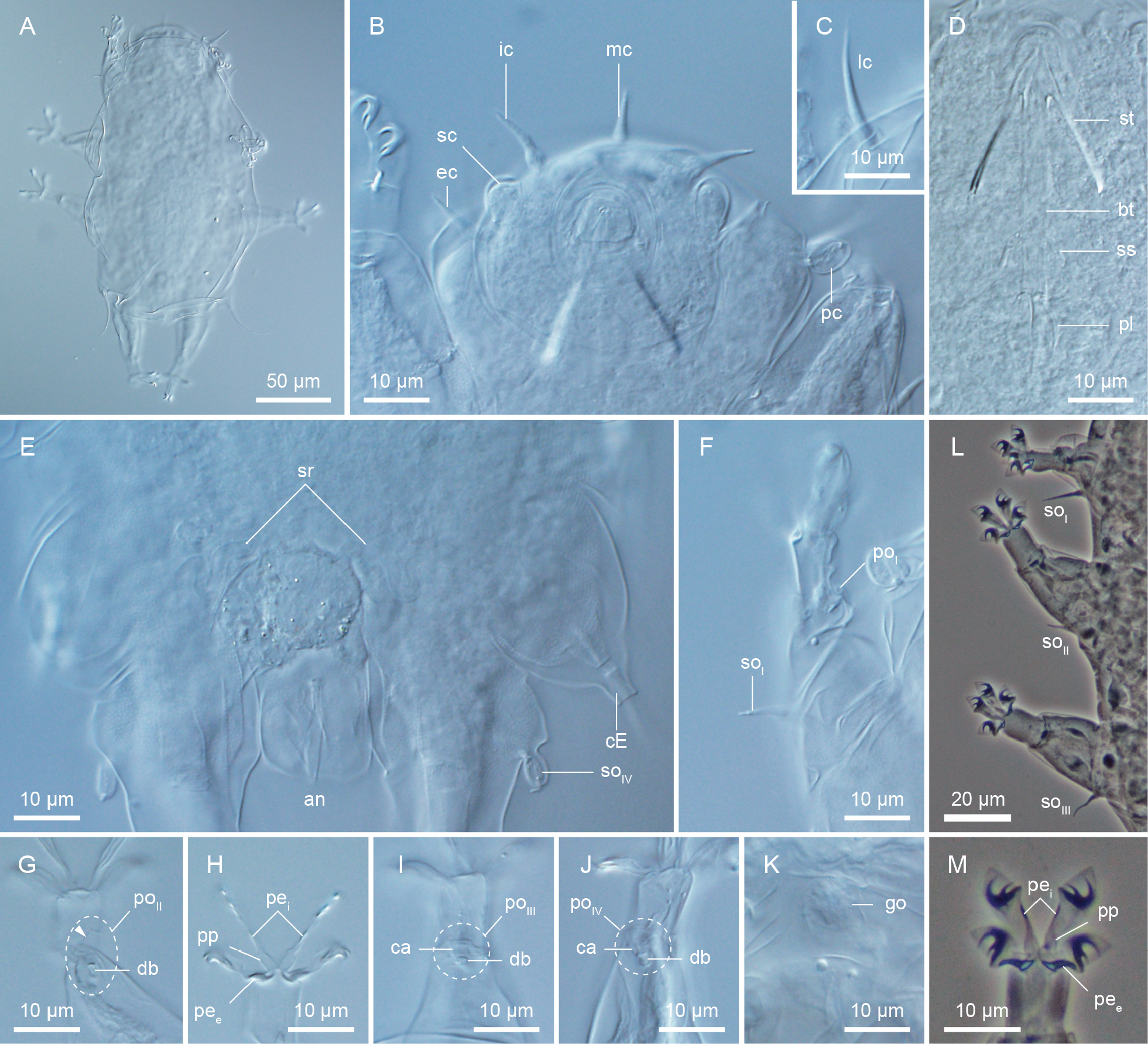
|
||
|
DIC and PhC micrographs of Cyaegharctus kitamurai gen. et sp. nov., adult female. A. Habitus (dorsal view). B. cephalic region (ventral view). C. Lateral cirrus. D. Buccal apparatus. E. Caudal region (ventral view) (epicuticle pillars visible). F. Leg I sensory organ and pocket organ. G. Leg II pocket organ (arrowhead indicates protruding portion). H. Leg II digits and claws. I. Leg III pocket organ. J. Leg IV pocket organ. K. female gonopore. L. Legs I–III sensory organs. M. Leg III digits and claws. A–J. holotype KUZ Z2624, K. paratype KUZ Z2625, L, M. paratype KUZ Z2626. an anus, bt buccal tube, ca cavity, cE cirrus E, db dense body, ec external cirrus, go gonopore, ic internal cirrus, lc lateral cirrus, mc median cirrus, pc primary clava, pei,e peduncles of internal and external digits, pl placoid, poI–IV legs I–IV pocket organs, pp proximal pad, sc secondary clava, soI–IV legs I–IV sensory organs, sr seminal receptacles, ss stylet support, st stylet. |